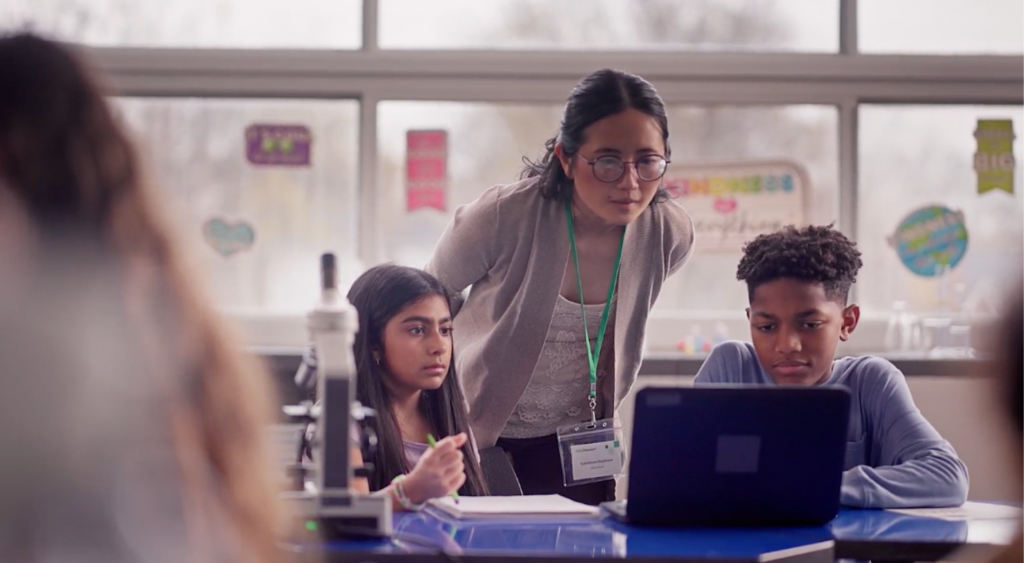Preparing for your first day as a new substitute teacher.

As a new substitute teacher, you might be a little nervous about your first day—or maybe it’s been a few months since your last assignment and you need a refresher from your initial training! No worries, Kelly Education takes training seriously. We want all our new substitute teachers and paraeducators to feel prepared for the classroom.
Kelly Education employees can watch a refresher of our New Substitute Teacher webinar to help you navigate common questions and classroom issues using real world examples from elementary, middle, and high school settings. Find a registration link in our monthly newsletter. This article provides some high-level tips we’ve pulled from the webinar.
Common guidance for new substitute teachers.
- Prepare the day before.
- Arrive early, check in at the office.
- Lesson plans: They look different at grade levels.
- Be aware of lunch, recess, dismissal procedures.
- End of the day tasks.
Getting ready for your first assignment.
Getting ready as a new substitute teacher starts with some planning before you leave the house.
- Dress in a way that conveys respect for your profession, the school, and the people with whom you’ll be working. There is likely a dress code policy that you should follow. Your clothing should be business casual, comfortable, and allow for the full range of motion.
- Bring your driver’s license. You’ll need to prove who you are, especially if it’s your first time in a building.
- Bring a notebook and a pen. In the classroom, you don’t want to be digging through the teacher’s desk.
- Bring time-filler worksheets such as coloring sheets, word searches, logic puzzles, math sheets—check with an administrator that it’s school- and age-appropriate.
- Check how long it will take to get to school. Don’t forget to account for traffic. When you arrive at school, you can typically park in a visitor spot, the staff parking lot, or any open space. Don’t park in numbered spaces, as these are usually reserved for students and staff who may have purchased the right to use them.
When you arrive.
We recommend that you arrive in your classroom at least 15 minutes early. This does not include the time it takes to find a parking space, walk to the entrance, go to the main office and sign in, or find your way to the classroom.
Always go directly to the front office to check in. The sign-in sheet provides validation for the hours you work, and it’s also there for security reasons. While in the front office, ask questions about where to find your class materials and lesson plans. Be sure to ask about emergency procedures and the procedures connected with arrival, recess, lunch, and dismissal.
Then, introduce yourself to teachers in the nearby classrooms. Look through what was left by the teacher, such as a seating chart, lesson plans, student roster list, phone list, and emergency protocol plan.
Write your name on the board so students know who you are. Also, write any lesson objectives or expectations and any other helpful information. Stand at the door and welcome the students as they come into the classroom. Then after the bell, introduce yourself.
New substitute teacher tips.
- Be flexible. When you come across unexpected situations, pivot and keep moving.
- Keep an open mind. Administrators sometimes must make quick decisions to make sure everything is covered, so they may switch your assignment. If you don’t feel comfortable with that assignment or something that would require extra training, talk to them to see if they can make other arrangements.
- Be positive and friendly with the students. Set boundaries though. Students may behave differently when a substitute teacher is there. Remember, students thrive when their classroom is managed well.
At the end of the day.
- Ask the students throughout the day to help by throwing away trash and putting class materials back where they belong.
- Leave a detailed note for the teacher — it should be more than a sentence or two, but not more than one page. Explain what went well and what didn’t and point out both good and bad behaviors.
- Be sure to check out at the main office. This confirms that you are done and allows you to return items such as keys, lesson plans, or class materials.
Watch our entire New Substitute Teacher webinar.
These are just a few fast tips for the first day as a new substitute teacher. If you’re an employe who wants to dig in more deeply, register for the recorded version. You’ll find the link in our monthly newsletter. It includes:
- Details about lesson plans and bringing back up plans.
- More details about our SAFE Touch Policy.
- Examples of behavior management techniques.
- Working with students with special needs.
- What if you get injured on the job?
- What to do with cancelled assignments.
- What to do if you are sick and can’t come in.
- More about the assignment management software.
Grow as a Kelly Education substitute teacher.
When you work with Kelly Education, you’ll get training before you ever enter the classroom. We also provide free professional development webinars and an extensive library of articles that address many aspects of substitute teaching. Check out these selections:
- Classroom management strategies
- What not to do as a substitute teacher
- Helpful tips on how to become a substitute teacher
If you think someone you know would make a great substitute teacher, have them fill out our interest form. A recruiter will contact them, answer any questions they have, and tell them about opportunities in their area to work with one of our district partners.

View Related: Article Career advancement
You might like
Find your next job
Discover thousands of temporary, full-time, and remote jobs for beginning and experienced job seekers.


